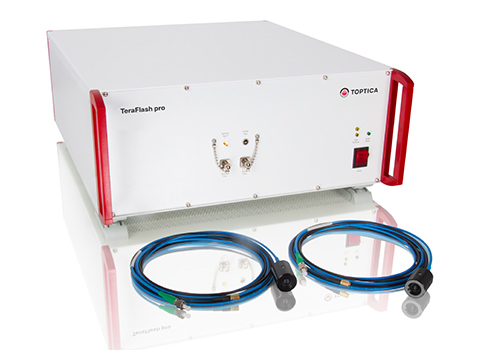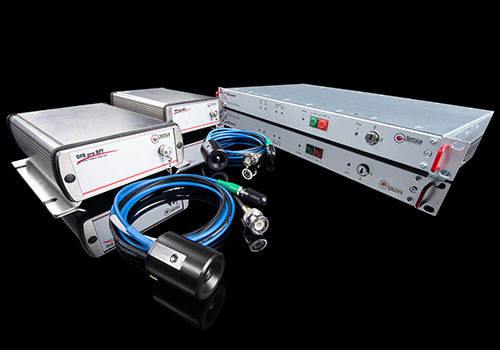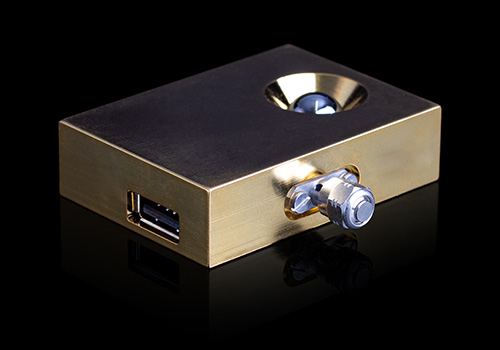Terahertz Sources
Advantages of optoelectronic systems
- Optoelectronic systems: High bandwidth, high speed
- Ideal for spectroscopy or non-destructive testing
- Pulsed terahertz: Fast measurements, broad spectrum
- cw terahertz: Precise frequency tuning, high resolution
The spectroscopically interesting frequency band of a 0.1 – 6 THz is not easily accessible. Electronic sources like voltage-controlled oscillators with subsequent frequency multipliers provide high output levels (mW range) up to a few 100 GHz, yet become inefficient in the submillimeter range. Direct optical sources, like quantum cascade lasers, are usually limited to frequencies > 2 THz, even when operated at cryogenic temperatures
Optoelectronic terahertz generation is an expression for indirect methods, where near-infrared laser light illuminates a metal-semiconductor-metal structure, generating a photocurrent that becomes the source of a terahertz wave. Both pulsed and continuous-wave (cw) techniques have been realized, and both have their merits. Pulsed terahertz radiation offers a broad bandwidth (0.1 – 6 THz) and permits very fast measurements – a spectrum can be acquired in less than a millisecond. On the other hand, the frequency resolution is limited to several GHz. Vice versa, a cw system features a somewhat lower bandwidth (typ. 0.1 .. 3 THz) and requires longer measurement times – acquiring a spectrum may take several minutes –, yet the frequency can be controlled with unmatched precision (down to single MHz).
TOPTICA offers components and complete systems for both time-domain (pulsed) and frequency-domain (cw) terahertz applications.
TOPTICA's Terahertz Products
Components and systems for time-domain (pulsed) and frequency-domain (cw) terahertz applications
Time-domain

Frequency-domain

Accessories



